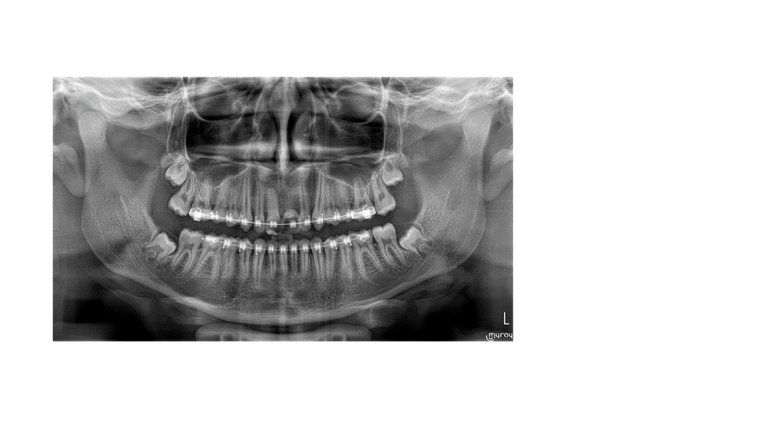Why Is a Referral Essential During Orthodontic Treatment
Complex cases that will benefit from orthodontic treatment require an interdisciplinary approach.
In our daily clinical practice we encounter many patients, usually adults, who are keen to improve the appearance of their smile. However, we as dentists need to bear in mind that the vast majority of adult patients seeking orthodontic treatment suffer from gum disease, missing or heavily restored teeth or other issues that have to be addressed before we start moving teeth.

What Is Orthodontic Referral for a Dentist
Clinicians who work in the field of orthodontics normally consider a referral to an orthodontist either when the complexity of the case and the presented malocclusion is too serious or when meeting the expectations of the patient might be challenging.
Clinical orthodontics and especially the adult orthodontics can be quite complex for a general dental practitioner who has limited experience in straightening teeth. It is always a good idea to refer your patient before any treatment is initiated. I personally think that there is nothing wrong with telling the patient that the treatment will be more complex than initially expected and that a consultation with a specialist is recommended.
Sometimes during the initial check up we encounter a mild malocclusion that appears simple and straightforward to correct. Consequently, we have the impression that the treatment can be accomplished in 6-12 months with braces or removable aligners. However, some dentoalveolar compensations can be quite tricky to notice. When compensations are removed with leveling and alignment of the dentition, we may then come across premature contacts that lead to deviation between maximum intercuspation and centric relation.
Differences between the last two can produce a significant difference in the overjet-overbite relation and that will complicate the treatment enormously. This is how the seemingly simple and straightforward case turns into more than two years of treatment.

Success in clinical orthodontics is based on two fundamental concepts – initial diagnosis and accurate implementation of the appropriate biomechanics, based on the specific requirements of the malocclusion.
That is actually the main focus of our courses, both online and live events. We want to teach you how to practice orthodontics safely in a stress-free environment at your own clinic.
How Does the Appropriate Orthodontic Referral Help Your Patients During Orthodontic Treatment
In my opinion every complex interdisciplinary case demands a consultation with another clinician and sometimes a couple of referrals. Of course we start with the caries treatment and oral hygiene instructions, which should be given in the greatest detail.
Cleft lip patients need to be seen by an oral surgeon, orthodontist, restorative dentist and maybe other clinicians. Usually those cases require additional appointments for thorough assessment and treatment plan discussion. Sometimes the referred patient needs to take into consideration the advice of other colleagues and it could take some time before he/she contacts your office in order to initiate treatment.
I think that the more informed the patient, the better the communication and end result will be. Adults might need to be referred during the course of the treatment for endodontic or periodontal treatment. Sometimes a tooth with root canal treatment might flare up during the movement and from an orthodontic point of view tooth extraction can be considered.
Sometimes the treatment plan has to be changed during the course of braces treatment. For example, moderate cases that can be treated either with or without teeth extractions. In those circumstances, referring the patient to another specialist in a timely manner will be highly appreciated.

Let me give an illustration of what can go wrong, for example, a Class II div 1 deep bite of a growing patient. After examining the patient in a natural head position we can gain the impression that the lower jaw is distally positioned and the profile can be improved. The patient has accepted two phases of treatment with a functional appliance and braces or aligners in order to improve the occlusion afterwards. However, having delivered the functional appliance, the teen then refuses to wear the appliance or the cooperation is so bad that no improvement can be anticipated.
Even if we initiate growth modification treatment at the appropriate age, treatment may not be successful due to a lack of cooperation or unfavorable growth response. The remaining options are camouflage treatment or combined ortho-surgical approach at the age of 18. That is an example of how the initially approved treatment plan has to be changed drastically.
How Do You Write an Orthodontic Referral
As I mentioned at the beginning of the article, it is better for you as a general dentist to refer a patient to an orthodontist in your area before any treatment is initiated. What I would recommend is attaching the x-rays and photos, scans, models and so on, with the referring letter and asking for a consultation, an assessment of the malocclusion and the possible treatment options.
However, most orthodontists would like to gather their own scans and photos of the dentition in order to prepare their own treatment plan.
If you find yourself in a difficult situation in the middle of orthodontic treatment, considering a referral to a specialist is a good decision.
Explaining to the patient what the complexity of the situation requires is definitely a good idea. In those circumstances it is best to have a conversation with the orthodontist before you refer the patient. Not many orthodontists accept patients in the middle of treatment.

Imagesource: depositphotos.com
If the orthodontist agrees then you have to provide your clinical notes, treatment plan, initial and progress records to the orthodontist, perhaps scheduling a joint meeting to make the whole transfer much easier.
It is a complex situation because the orthodontist might not agree to your initial treatment plan and that is something that will be new for the patient and/or the parent. Another important aspect of the transition to an orthodontist is the financial part of the treatment.
Bearing in mind that in most countries orthodontic treatment is usually private, you might find yourself in the position of paying the orthodontic clinic fee to take over your patient. In order to avoid those unpleasant moments, I strongly encourage you not to undertake a treatment of a case that you are not sure you can treat according to the accepted standards.
FAQ:
When Should You Refer a Patient to an Orthodontist?
Preferably, it should be before the start of the treatment. That way you can avoid any future problems.
Should I Prepare Documentation for the Orthodontist?
It is best to send any patient information to the orthodontist. That way it will be easier for them to decide on the treatment.
When Is the Time to Talk With the Patient That an Orthodontic Referral Is Best?
In my opinion, you should be as open as possible with your patients. That way they will be well-informed of every step in the treatment.







